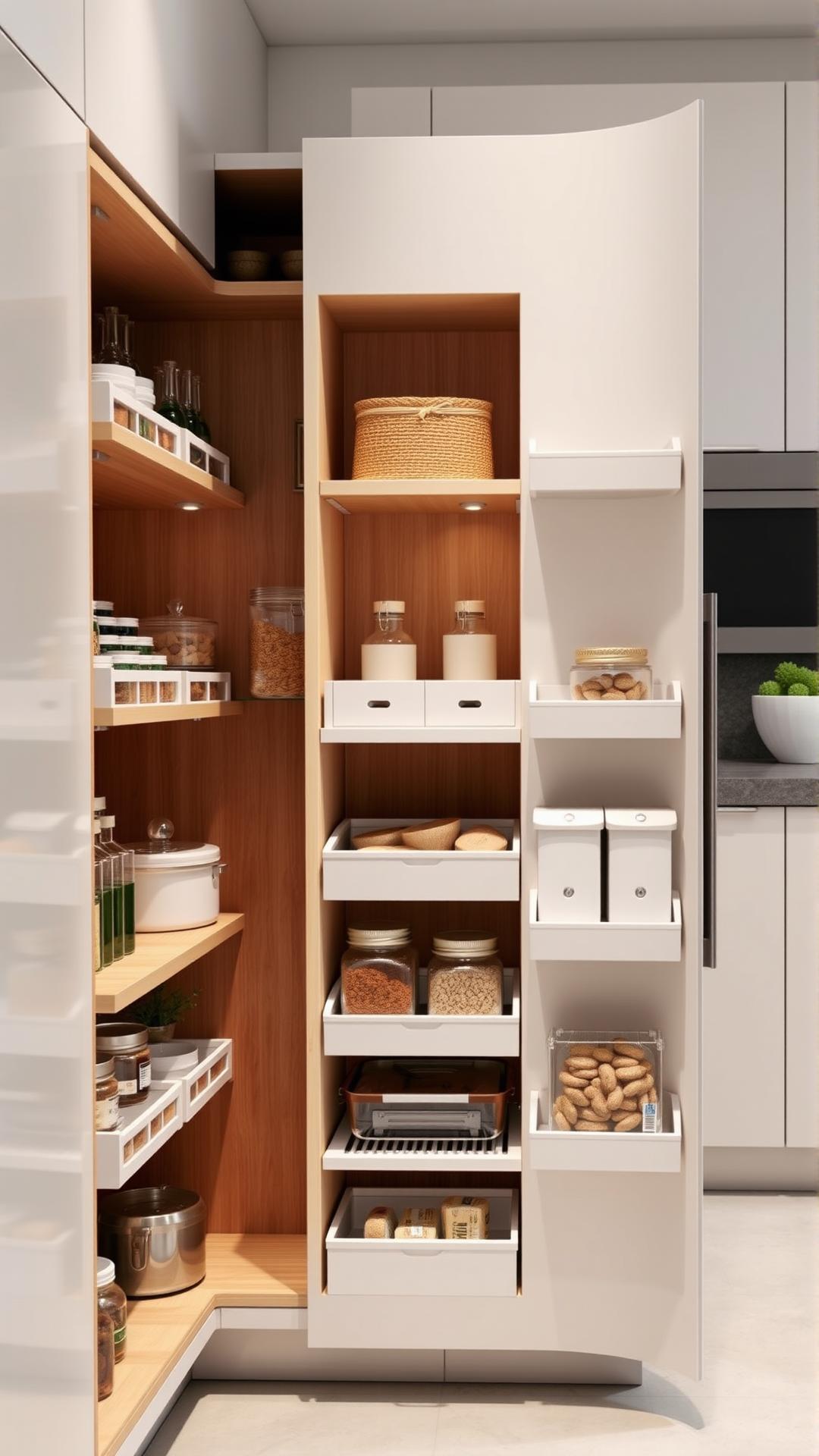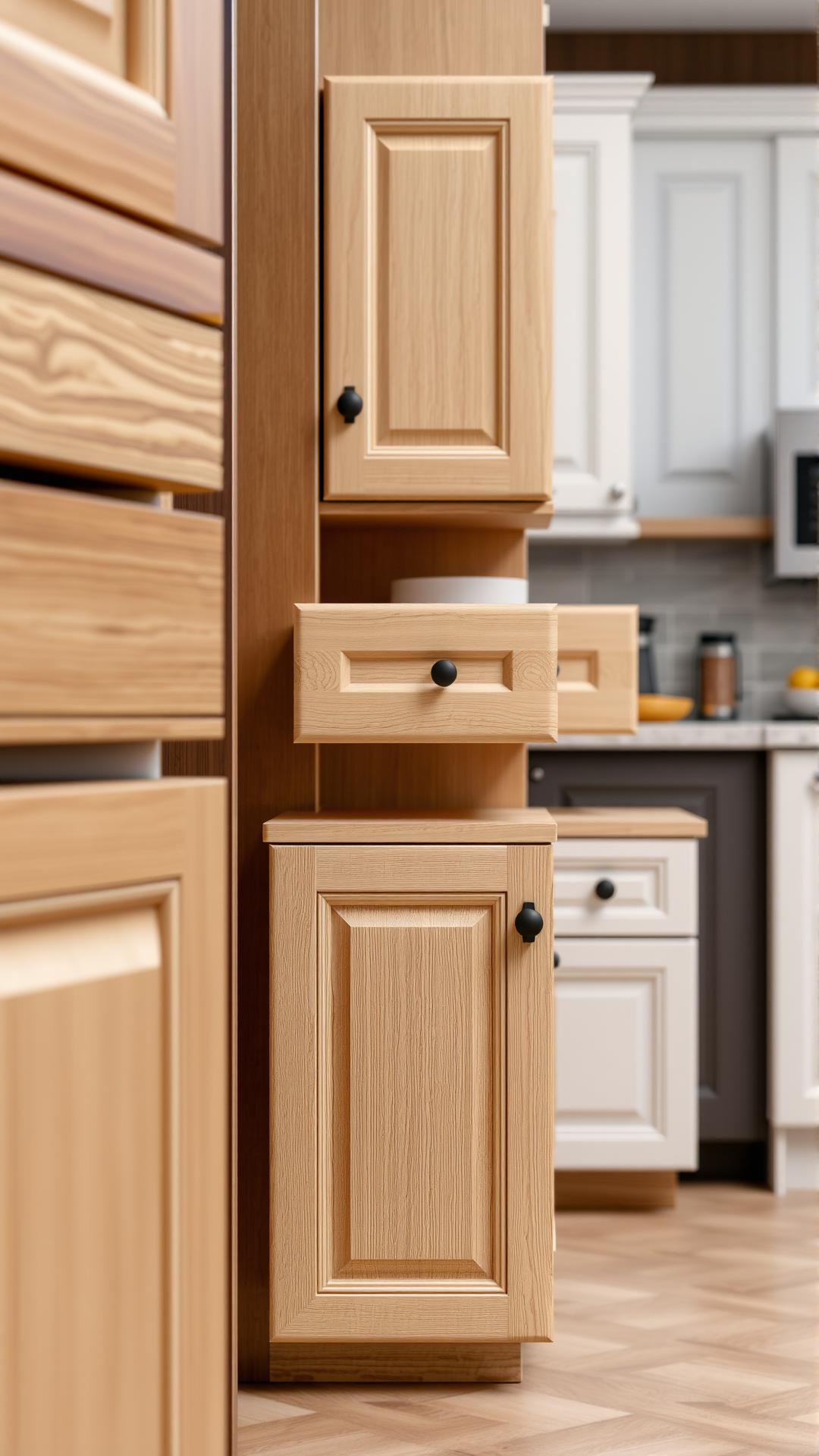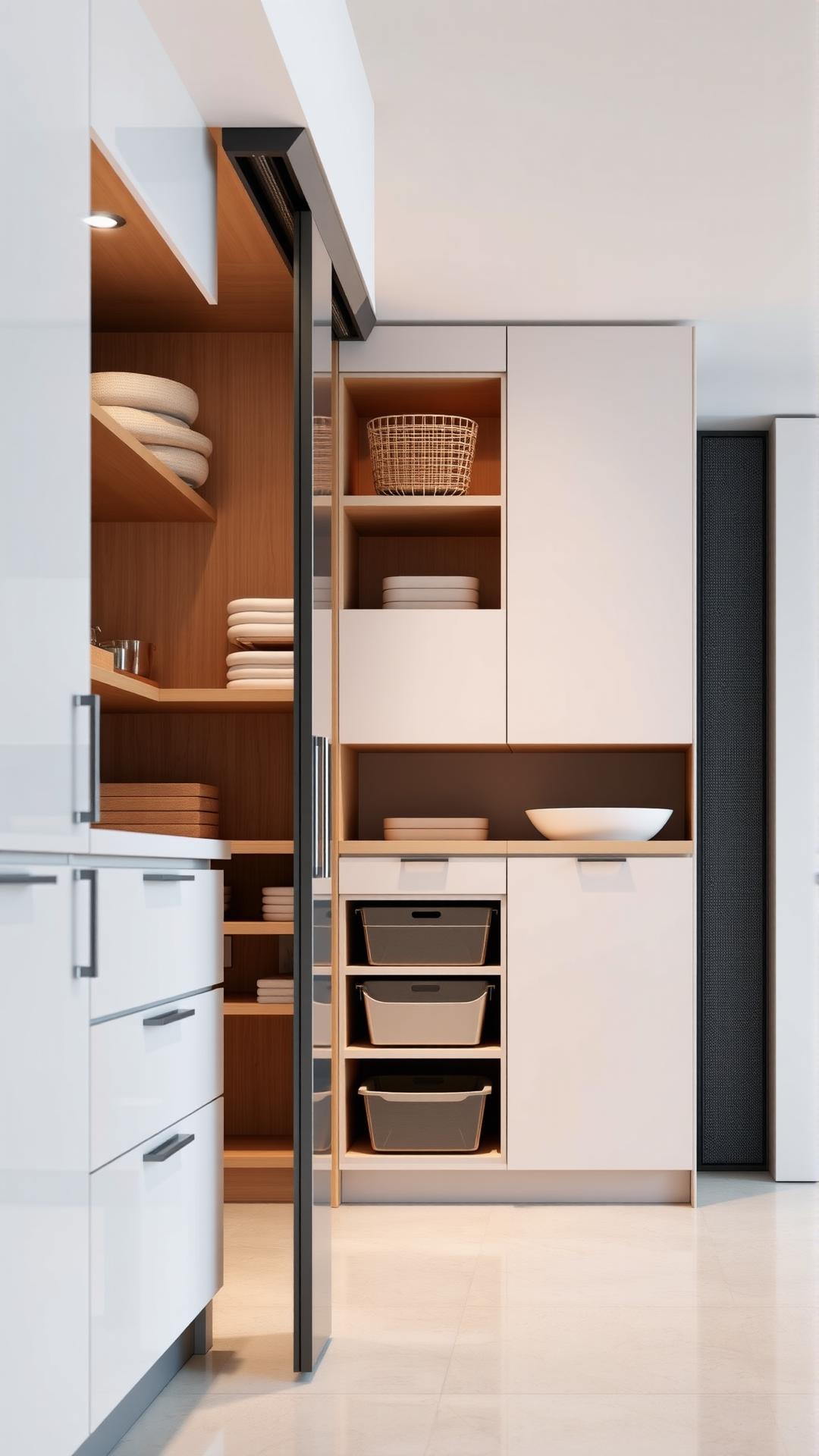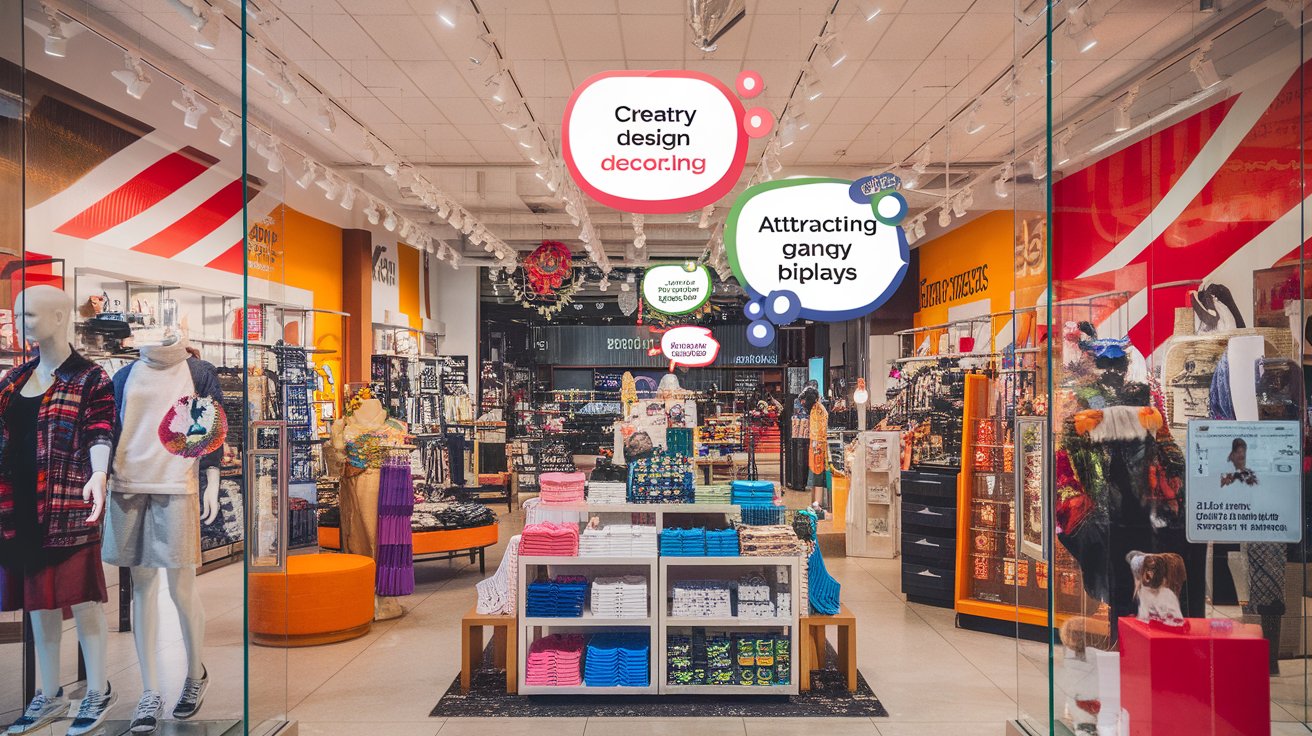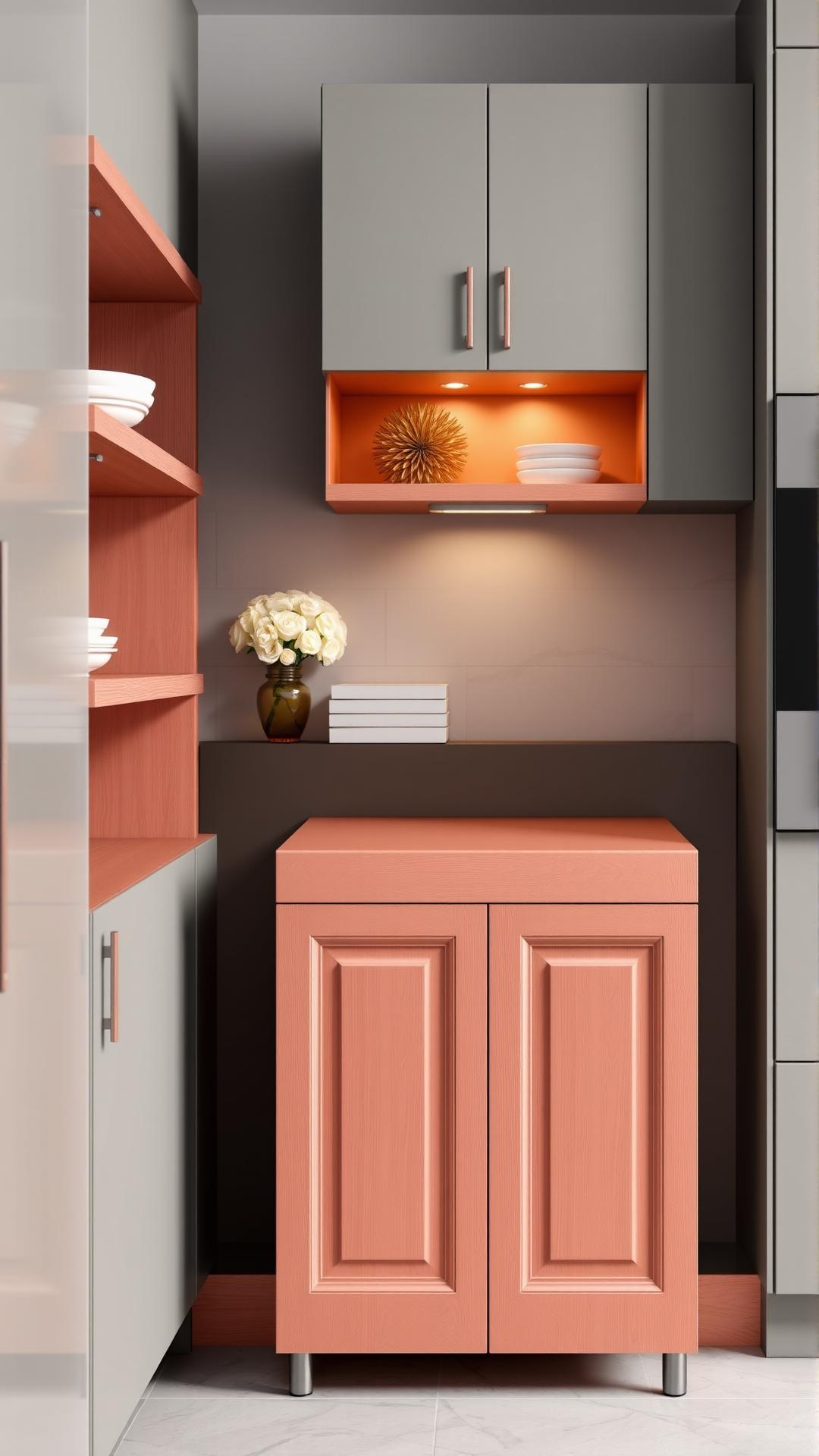Introduction
The kitchen is often called the heart of the home, and a well-organized pantry cabinet is essential for maintaining functionality and aesthetics. In today’s fast-paced modern life, having an efficient storage solution can significantly enhance your cooking and meal-preparation experience. A pantry cabinet can help maximize your kitchen space, allowing for easy access to various ingredients and cooking essentials. From small, cleverly designed cabinets to spacious walk-in pantries, today’s options provide innovative solutions for every kitchen layout.
In this article, we will look into a variety of pantry cabinet ideas that can help create an organized kitchen environment. We will explore different styles, functionalities, and designs that balance practicality with aesthetic appeal. Whether you have a compact kitchen or a large culinary space, our guide will offer inspiration and tips to create a pantry cabinet that meets all your storage needs, ultimately leading to a more enjoyable cooking experience.
Understanding the Importance of a Pantry Cabinet
The role of pantry cabinets in kitchen organization transcends mere storage; they serve as vital components that enhance functionality and efficiency. Historically, pantry cabinets originated in the early European kitchens, where they functioned as cool storage areas for perishable goods. Over time, these cabinets evolved, integrating more sophisticated designs and materials to address the changing needs of households. While the original purpose was preservation, pantry cabinets now embody organization, style, and convenience.
Modern kitchens often prioritize space optimization, and pantry cabinets are pivotal in achieving that goal. They provide designated areas for a variety of kitchen essentials, including canned goods, grains, spices, and snacks. By having a dedicated pantry cabinet, users can reduce countertop clutter and streamline meal preparation. This organization is not just about aesthetics; it’s about creating an efficient culinary environment where every item has its place.
The transformation of pantry cabinets over centuries reflects broader shifts in domestic life and technological advancements. As kitchens transitioned from utilitarian spaces to gathering areas for family and friends, pantry cabinets adapted accordingly. New design trends emerged, incorporating open shelving, sliding doors, and innovative storage solutions such as pull-out drawers and vertical dividers. These enhancements cater to the needs of modern cooks who require ready access to ingredients while maintaining a sleek appearance in their kitchens.
Functionality is also paramount in contemporary pantry cabinet designs. Many now include adjustable shelving to accommodate varying sizes of food containers and pantry staples. Others feature eco-friendly materials and finishes, aligning with the increasing awareness and demand for sustainability in home products. Additionally, integrated lighting options are becoming popular, illuminating the contents of pantry cabinets and making it easier to find items in low-light conditions.
The significance of pantry cabinets in kitchen organization cannot be overstated. They have evolved from simple storage solutions to versatile elements that enhance both functionality and style in modern kitchens. As they continue to adapt to the needs of contemporary lifestyles, pantry cabinets remain essential for creating a well-organized and efficient culinary space.
Types of Pantry Cabinets to Consider for an Organized Kitchen
Exploring Various Pantry Cabinet Styles
When it comes to enhancing the functionality and aesthetic appeal of your kitchen, selecting the right type of pantry cabinet is paramount. There are various styles available today, each with unique features and benefits suited to different needs and tastes. Understanding the variety can help you choose the perfect one to complement your modern, organized kitchen.
Traditional pantry cabinets often exude warmth and charm, featuring ornate woodwork and classic hardware. These cabinets integrate seamlessly with a farmhouse-style kitchen or any space that leans into historical design. They typically include solid wood construction, glass-front doors, and ample shelving that can accommodate large bulk items. Their visual appeal can turn functional storage into a centerpiece of the kitchen.
On the other hand, modern pantry cabinets present a sleek and sophisticated option. Characterized by clean lines, minimalist designs, and contemporary finishes, these cabinets prioritize both utility and style. Often crafted from materials like metal and acrylic, modern pantry cabinets can include smart technology like built-in lighting or electronic displays, providing both convenience and a polished appearance.
Minimalist pantry cabinets take modern design a step further, stripping away unnecessary embellishments to focus on essential utility. These cabinets often employ hidden handles and flush surfaces, promoting a clutter-free look that enhances space. Ideal for those with a keen eye for design, minimalist options maintain practicality while ensuring the pantry integrates harmoniously with the rest of the kitchen.
For those seeking versatility, multi-functional pantry cabinets are an excellent choice. These cabinets often combine features with other kitchen elements, such as folding tables or built-in seating. Some may include a workspace where meal prep can happen alongside storage, making them perfect for smaller kitchens where every square inch counts. They can be intricately designed to serve dual purposes, ensuring no space is wasted while catering to various kitchen activities.
Each pantry cabinet style offers its own set of advantages, depending on your kitchen’s theme and practicality needs. By considering these different types, you can effectively transform your kitchen into an organized and modern space, fully equipped to meet your culinary demands.
Incorporating Functionality into Design: Blending Pantry Systems for Modern Kitchens
When it comes to designing a functional pantry cabinet, the marriage of form and function is essential for creating an organized, modern kitchen. By integrating practical features into the design of pantry cabinets, you can enhance accessibility and ensure that every item has its place. Various elements such as tailored shelving, versatile drawers, and efficient sliding systems contribute to a seamless experience within your kitchen space.
Design Features for Maximum Efficiency
One of the key considerations in designing pantry cabinets is the arrangement of shelving. Adjustable shelves allow you to customize the height between each level, accommodating various sizes of jars, containers, and appliances. This flexibility not only maximizes storage capacity but also prevents wastage of space, ensuring that no corner is left underutilized. Consider deep shelves to store bulk items, or even pull-out shelves that offer easy access to frequently used goods.
Another important aspect is the use of drawers, which are perfect for organizing smaller items such as spices, snacks, or utensils. Incorporating different sizes of drawers within the cabinet allows you to segregate and store items logically. Furthermore, drawers with dividers can help maintain organization, making it easy to locate items quickly while cooking or preparing meals.
Sliding Systems: A Space-Saving Solution
In smaller kitchens, the introduction of sliding systems can substantially enhance functionality. Pull-out pantry cabinets or sliding shelves help optimize the available space without compromising on accessibility. These systems can be designed to slide out to reveal additional shelving or compartments, which are perfect for stashing pantry essentials or kitchen gadgets that would otherwise clutter countertops.
Built-in systems like lazy Susans can rotationally shift items, making it simple to find what you’re looking for without needing to rummage through deep shelves. This thoughtful approach not only adds convenience but also embodies a modern aesthetic that elevates the overall kitchen experience.
When blending functionality into the design of your pantry cabinet, think about how each component can work individually and collectively to create an efficient, organized space. Transitioning from mere storage to an integral part of everyday cooking can transform your kitchen into a well-oiled machine, ready to handle any culinary task with ease.
Aesthetics: Choosing Colors and Finishes for Your Modern Pantry Cabinet
The visual appeal of your kitchen is closely tied to the pantry cabinet’s aesthetics, specifically the colors and finishes you choose. A pantry cabinet that harmonizes with the overall design of the kitchen can elevate the ambiance and create a cohesive look. When selecting color palettes, consider the existing tones in your kitchen and how they interact with one another.
Selecting Colors That Complement Your Kitchen
Choosing colors for your pantry cabinet can significantly influence the room’s atmosphere. Neutral shades such as whites, grays, and beige often serve as a solid foundation, allowing for flexibility in accent colors and decor. For a modern touch, darker hues like navy blue or charcoal gray can create a striking contrast against lighter kitchen elements. When aiming for a harmonious design, consider the following:
- Examine your countertops, backsplash, and cabinetry to find complementary tones.
- Use sample swatches in natural light to visualize how colors will appear at different times of the day.
- Incorporate the 60-30-10 rule, where 60% of the space is dominated by a primary color, 30% by a secondary, and 10% accent shades.
Choosing the Right Finishes for a Modern Look
Finishes play an essential role in how colors are perceived and can enhance the overall aesthetic of your pantry cabinets. Matte finishes lend a more contemporary vibe, while glossy finishes may introduce an element of luxury and brightness. Consider the durability and maintenance of finishes, especially in high-use areas like the kitchen. Options to explore include:
- Painted finishes that are easy to clean and can be updated with a fresh coat.
- Wood veneer for a warm, organic feel that pairs well with other natural elements in the kitchen.
- Laminate for a cost-effective option that mimics wood or other materials without the upkeep.
When finalizing your palette and finish selections, think about the long-term effects on your kitchen’s design. A cohesive look that intertwines colors and finishes will not only beautify the pantry area but also create an inviting, organized space that reflects your unique taste.
Maintenance Tips for Your Pantry Cabinet
Maintaining a Modern Organized Pantry
Keeping your pantry cabinet clean and organized is essential for its longevity and functionality. With the right maintenance strategies, you can ensure that your pantry remains a cornerstone of your modern kitchen. Start with regular cleaning schedules; a monthly deep clean can make a significant difference. Clear out all items, dust the shelves, and wipe down surfaces with a mild cleaning solution. This will not only eliminate dust and crumbs but also help you evaluate what you actually use and what has been forgotten.
Implementing a system using clear bins or labeled containers can also be highly effective. Not only do these solutions enhance organization, but they also make it easier to identify what needs replenishing without overly rummaging through the cabinet. Keeping similar items together—grains with grains, snacks with snacks—creates a visually appealing and easily navigable space.
Periodic Checks and Strategies
To maintain a supply of fresh ingredients while minimizing waste, conduct periodic checks on the items stored in your pantry cabinet. Establish a schedule, perhaps every three to six months, to reevaluate your pantry inventory. During these checks, discard expired items and consider donating those that are still in good condition but that you no longer plan to use. This practice not only declutters your space but also aligns with the principles of sustainable living.
Implementing a first-in, first-out method can enhance efficiency as well. Place newer items at the back of the shelf, allowing older items to be easily seen and accessed. This strategy is particularly useful for perishable goods, allowing you to use them before they spoil.
Consider residential systems like drawer dividers or slider shelves for easy access to items. These clever organization tactics facilitate the periodic checks you engage in, preventing too much climb or bend to reach for what you need. Remember that a well-maintained pantry does not just serve a functional purpose but contributes to an organized, modern kitchen aesthetic, allowing you to enjoy cooking and meal prep more than ever.
Conclusions
A well-designed pantry cabinet can transform the chaos of everyday cooking into a streamlined and enjoyable process. With various styles and functionalities available, you can find solutions that fit your kitchen’s unique layout and your personal needs. From pull-out drawers that maximize space to open shelving that showcases your favorite ingredients, an organized pantry helps maintain a clutter-free environment.
Investing time in creating an organized pantry cabinet not only enhances your kitchen’s functionality but also adds to the overall aesthetic of your home. As we explored various ideas and designs, remember to choose elements that resonate with your personal style while meeting your organizational needs. With these tips and ideas in hand, you can create a pantry that is both beautiful and practical.



